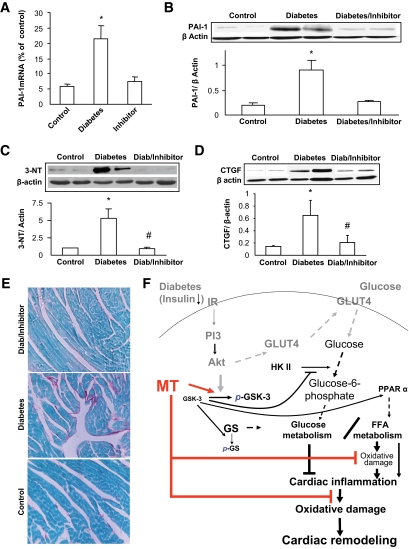FIG. 8.
Inhibition of GSK by its inhibitor attenuated diabetes-induced cardiac inflammation, nitrosative damage, and fibrosis. Experimental approaches and cardiac tissue sampling are the same as those in Fig. 6. Samples were examined for cardiac expression of PAI-1 by real-time RT-PCR (A) and Western blotting (B), cardiac 3-NT accumulation (C), and cardiac fibrosis by Western blotting for CTGF expression (D) and Sirius Red staining of collagen (200×) (E). *P < 0.05 vs. corresponding controls; #P < 0.05 vs. corresponding diabetes. F: schematic illustration of the mechanisms by which metallothionein (MT) preserves GSK-3β phosphorylation to maintain glucose and lipid metabolism balance under diabetic conditions and, consequently, inhibit cardiac lipid accumulation, inflammation, oxidative/nitrosative damage, and remodeling. Solid lines present the experimental finding from the present study, and dashed lines indicate well-known pathways from the literature. GS, glycogen synthase; IR, insulin receptor. (A high-quality digital representation of this figure is available in the online issue.)

